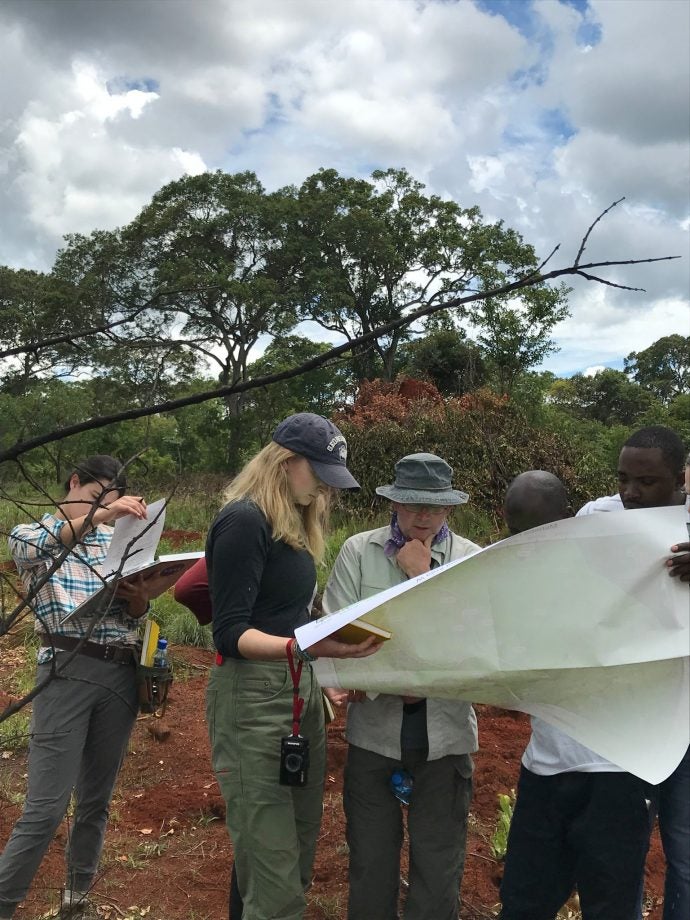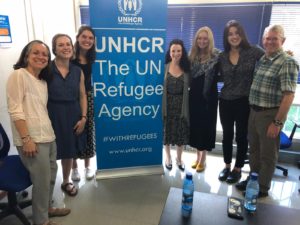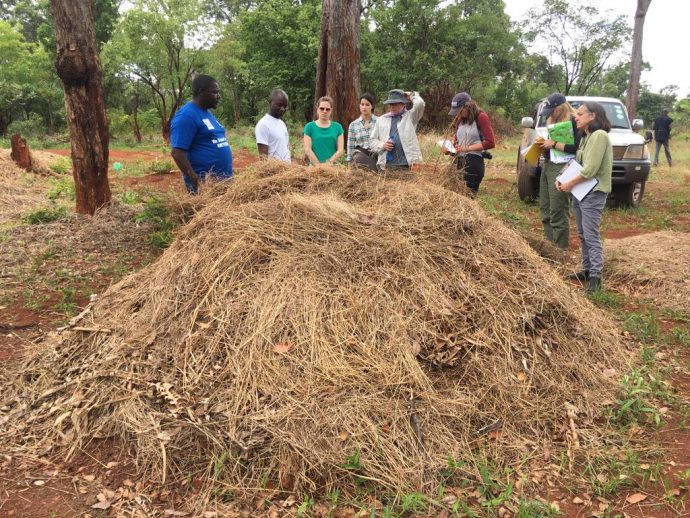Research in Zambia
The research in Zambia was a continuation of a previous study Smith and Howard took part in that was conducted in Ethiopia and Djibouti with colleagues from the Institute for the Study of International Migration and the STIA program. “The earlier study was looking at arid environments in Ethiopia and Djibouti, and this time we’re looking at more fertile environments, which is the camp in Zambia, a camp called Meheba,” Smith explained.

The project had two components: quantitative research and qualitative research. Howard, an adjunct professor who worked on this project in his capacity as a geologist with the US Geological Survey, led the quantitative aspect, using satellite imagery to track changes in land cover and land use.
“What we want to do is look at the change of land cover types over time to see if there have been impacts to the environment, to the host communities, and to other environmental factors. And how are they using natural resources over time,” Howard said.
Prior to the trip, Howard, Chertok, and two STIA majors from his Remote Sensing class, Rebecca Ohman (SFS’19) and Signe Stroming (SFS’19), assembled time-series images of the camp over its history. In Zambia, the team’s job was to “ground truth” the imagery, assessing what the actual ground cover was in order to correlate it back to the images they processed beforehand. This work produced a robust dataset for predictive and historical modeling.
The students performed their assessments by “going out in the field every day with their boots and their backpacks and their notepads and collection instrumentation for data,” Howard said.
“We had to tune our bodies and minds into scientific instruments, and sort of ‘think like a satellite’ to build consistency into our observations,” Stroming said.
“I think the most surprising part of the experience was discovering what we were able to see from our bird’s eye view through satellite imagery versus on the ground,” Ohman said. “Massive termite mounds are actually visible in the satellite imagery, but we had no way of contextualizing what we were seeing before seeing them in person!”
On the qualitative side, Smith, graduate student Tessa Coggio (MAGES’19) and Yossinger studied refugees’ and other stakeholders’ knowledge and perceptions of environmental changes and management practices. During the fall semester, Coggio prepared background briefs on the history of the refugee camp and Zambia’s refugee hosting history to ensure that the team would be well-informed going into their interviews. On the trip, she helped to produce transcriptions and conducted one of the focus groups.
“It was an all-around incredible privilege to be there, and I’m thankful the people we interviewed were so gracious in sharing their stories with us,” Coggio said.
Back at Georgetown, Coggio is coordinating the transcription and qualitative coding of the focus group interviews for analysis.
“[The students] were essential to the work, we couldn’t have done it without them,” Howard said.

